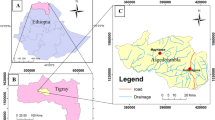Abstract
Present study was undertaken to analyze drinking water quality of Kathmandu valley with the estimation of essential minerals of public health concern. Twenty water samples of each source, viz. public water supply, private water supply, and processed drinking water supply, were randomly collected. Sample analysis was carried out for physical (temperature, pH, and electrical conductivity), chemical (calcium, magnesium, sodium, and potassium), and microbiological (total coliform—TC) parameters. It was found that the physical parameters such as temperature, pH, and electrical conductivity (EC) were within the World Health Organization (WHO) drinking water quality guidelines. Generally, for all the water sources the average concentration of calcium was below the WHO drinking water quality guidelines as well as DRI (Dietary Reference Index) recommendations. Moreover, the concentration of magnesium, sodium, and potassium was also found below the DRI recommendations for all the water sources. Microbiological parameter enumerated for TC in processed drinking water depicted bacterial population from 0 CFU/100 mL to 46 CFU/100 mL. The presence of TC in processed drinking water makes the water unacceptable for drinking purpose, although the physical parameters were almost within the WHO drinking water quality guidelines. The presence of required amount of minerals plays a critical role in maintaining human health system and vitality. Therefore, this study explores the quality of drinking water in the Kathmandu valley in terms of minerals and TC bacteria.

Similar content being viewed by others
References
Aaron KJ, Sanders PW (2014) Role of dietary salt and potassium intake in cardiovascular health and disease: a review of the evidence. Mayo Clin Proc 88(9):987–995
Azoulay A, Garzon P, Eisenberg MJ (2001) Comparison of the mineral content of tap water and bottled waters. J Gen Intern Med 16(3):168–175
Bonjour JP (2005) Dietary protein: an essential nutrient for bone health. J Am Coll Nutr 24(6):526–536
CBS (2012) Central bureau of statistics. National population and housing census 2011. National Planning Commission (NPC), GoN
DoH (2016) Coliform bacteria and drinking water. Department of Health, US. https://www.doh.wa.gov/Portals/1/Documents/Pubs/331-181.pdf. Accessed 25 Aug 2019
DRIs (2004) Dietary reference intakes (DRIs). Nutr Rev Wiley Online Libr. https://doi.org/10.1111/j.1753-4887.2004.tb00011.x
FAO & WHO (1998) Vitamin and mineral requirements in human nutrition, 2nd edn. Food and Agriculture Organization and World Health Organization, Geneva
Greenberg AF, Clescerl LS, Eaton AD (2005) Standard methods for the examination of water and wastewater, 20th edn. American Public Health Association (APHA), Washington DC
Hinrichsen D, Tacio H (2002) The coming freshwater crisis is already here. Finding the source: the linkages between population and water, Woodrow Wilson international center for scholars. ESCAP publication, Spring, Washington, DC
Jha PK, Shreshtha KK (2013) Climate change and urban water supply: adaptive capacity of local government in Kathmanu city, Nepal. J For 11:62–81
Keen CL, Ensunsa JL, Watson MH, Baly DL, Donovan SM, Monaco MH, Clegg MS (1999) Nutritional aspect of manganese from experimental studies. Nerotox 20:213–226
NRC (1989) Recommended dietary allowances, 10th edn. National Research Council, Washington DC
Pant BR (2011) Ground water quality in the Kathmandu valley of Nepal. Environ Monit Assess 178:477–485
Qiu Z, Tan Y, Zeng H, Wang L, Wang D, Luo J (2015) Multi generational drinking of bottled low mineral water impairs bone quality in female rat. PLoS One. https://doi.org/10.1371/journal.pone.0121995
Soetan KO, Olaiya CO, Oyewole OE (2010) The importance of mineral elements for humans, domestic animals and plants: a review. Am J Food Sci 4:200–222
Subedi M, Aryal M (2010) Public perception about drinking jar water and its bacteriological analysis. Nepal Med Coll J 12:110–114
Udmale P, Ishidaira H, Thapa BR, Shakya NM (2016) The status of domestic water demand: supply deficit in the Kathmandu valley, Nepal. Water 8:196
Vander A, Sherman JH, Luciano DS (2001) Human physiology: the mechanism of body function. McGraW-Hill, New York
Welten DC, Kemper HC, Post GB, Van MW, Twisk J, Lips P, Teule GJ (1994) Weight bearing activity during youth is a more important factor for peak bone mass than calcium intake. J Bone Miner Res 9:1089–1096
WHO (1986) Health impact of acidic deposition, 20th edn. World Health Organization, Geneva
WHO (1996) Guidelines for drinking water quality, 20th edn. World Health Organization, Geneva
WHO (2011) Emergency treatment of drinking-water at the point of use, World Health Organization. https://www.who.int/water_sanitation_health/publications/2011/tn5_treatment_water_en.pdf. Accessed 25 Aug 2019
WHO (2013) Guidelines on dietary salt and potassium. World Health Organization, Geneva
Acknowledgements
Current study is a program of Nepal Academy of Science and Technology. The authors are grateful to the Vice Chancellor of the academy for his keen interest and encouragement to carry out this work.
Author information
Authors and Affiliations
Contributions
BRP supervised entire work. KT and SMS were involved in sample collection and analysis. DSR contributed to data analysis and manuscript preparation.
Corresponding author
Ethics declarations
Conflict of interest
The authors declare no conflict of interest.
Additional information
Publisher's Note
Springer Nature remains neutral with regard to jurisdictional claims in published maps and institutional affiliations.
Rights and permissions
About this article
Cite this article
Thapa, K., Shrestha, S.M., Rawal, D.S. et al. Quality of drinking water in Kathmandu valley, Nepal. Sustain. Water Resour. Manag. 5, 1995–2000 (2019). https://doi.org/10.1007/s40899-019-00354-x
Received:
Accepted:
Published:
Issue Date:
DOI: https://doi.org/10.1007/s40899-019-00354-x




